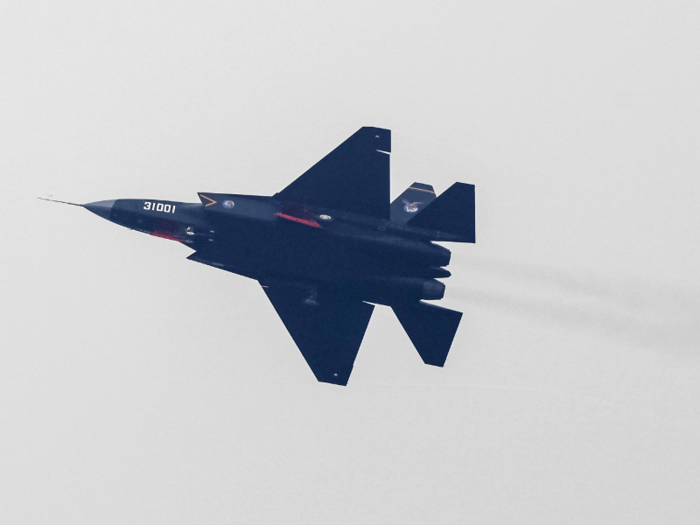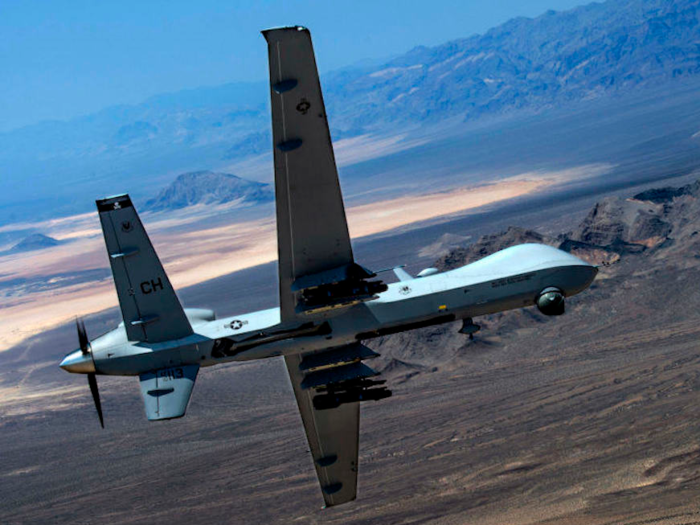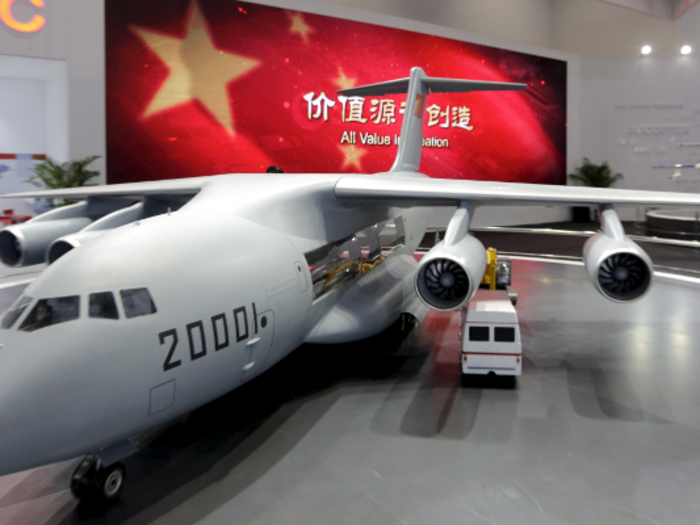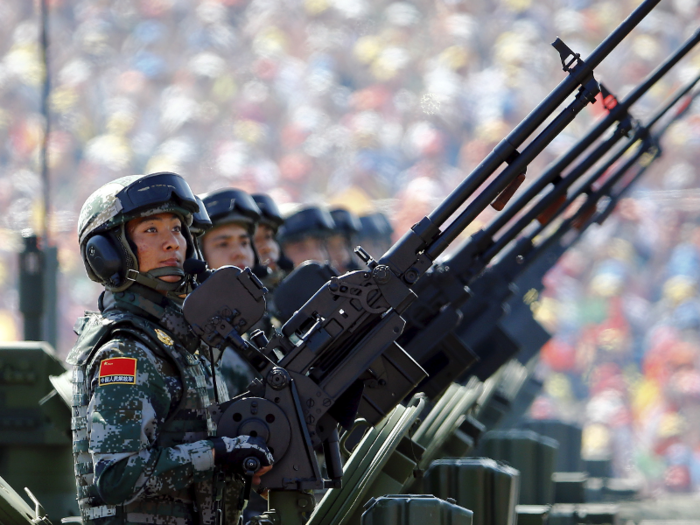- Home
- slideshows
- miscellaneous
- China steals US designs for new weapons, and it's getting away with 'the greatest intellectual property theft in human history'
China steals US designs for new weapons, and it's getting away with 'the greatest intellectual property theft in human history'
The PLA's J-20 looks extremely similar to the US Air Force's F-22 Raptor.

The Chinese Shenyang J-31 is strikingly similar to the US F-35.

The Shenyang J-31 is still under development but will likely replace the J-15 fighter, at least on aircraft carriers. The J-15 has been plagued with issues, including multiple fatal crashes and problems with its engine, the South China Morning Post reported last year.
The J-31 is the People's Liberation Army's second stealth aircraft and was first seen in 2014. There is widespread speculation that the J-31 is based on Lockheed Martin's F-35 plans, although China has denied those claims.
The J-31 is lighter and has a shorter range than the F-35 but may beat it with maximum speed of Mach 1.8 to the F-35's Mach 1.6, Popular Science reported in 2017.
The question of how well these aircraft actually match up to their US competitors remains, and, Kliman said, appearances are only part of the equation.
"Sometimes superficially the designs do look similar — it could be, in part, from some of the attempts China's made to acquire good technology, but I would just caution that at the end of the day, it's hard to know how similar it is or not," he told Insider.
The Caihong-class unmanned aerial vehicle, including the CH-4 and CH-5, look unmistakably like US MQ-9 Reaper drones.

While there's no concrete evidence that the Chinese design is the result of espionage or theft, the visual similarities are unmistakable — nose-mounted cameras on the CH-4B, as well as locations for external munitions are just like those on the Reaper, Popular Mechanics reported in 2016, calling the two aircraft "identical."
Breaking Defense reported in 2015 that, in addition to the same domed nose and V-shaped tail, the UAVs both have 66-foot wingspans.
Drone designer Shi Wen, of the China Academy of Aerospace Aerodynamics, told China Daily three years ago that the CH-5 model "can perform whatever operations the MQ-9 Reaper can and is even better than the US vehicle when it comes to flight duration and operational efficiency."
But again, Chinese technology and specifications likely don't match up to US counterparts.
For starters, the Reaper can carry roughly double the munitions of the CH-5. And while the CH-5 can travel farther, with a range of about 1,200 miles, its flight ceiling is about 23,000 feet, compared to the Reaper's nearly 50,000-foot ceiling, according to the Center for Strategic International Studies' China Power project.
The Reaper also has a heavier maximum takeoff weight and can travel at twice the speed of the CH-5, due to persistent challenges with Chinese-made engines.
The Chinese air force's Y-20 transport aircraft has design similarities to the US Air Force's C-17 Globemaster III.

Su Bin pleaded guilty in 2017 to conspiring to steal technical data related to the C-17 from Boeing and the US Air Force.
That data likely was used to build the Xian Y-20, China's large transport aircraft, nicknamed the "Chubby Girl." As Garrett M. Graff notes in Wired, Su helped pilfer about 630,000 files related to the C-17.
Whether China used information about the C-17 to build the Y-20 is unclear — Beijing has denied stealing US technology for its weapons systems — but the similarities are apparent, from the nose to the tail stabilizer, as Kyle Mizokami points out in Popular Mechanics.
The Y-20 has a smaller empty weight and payload than the C-17, Popular Mechanics reported in 2016, but the Y-20 is the largest transport aircraft in production. The Chinese military lacked a large transport carrier prior to the development of the Y-20, making it difficult to quickly mobilize large numbers of supplies and troops to battlefields or disaster areas, Wired reported in 2012.
"Just because something looks somewhat similar doesn't mean it has equivalent capabilities," Kliman cautioned, particularly where human capability is concerned.
"It's not the technology alone. It's the quality of the pilots in a fighter airplane. It's the quality of the systems that are feeding the aircraft information," Kilman said.
China hasn't fought a foreign war since the brief Sino-Vietnamese War in 1979. US service members and systems have much more battlefield experience than Chinese forces.
"The [People's Liberation Army] has made a long-term effort to improve its human capital, including through training but also through education ... but at this point, the US, our pilots, our operators get, certainly, the real-world experience," Kilman said.
Where does China go from here?

If Esper and retired Navy Adm. William McRaven are to be believed, China is rapidly closing the technology and defense gap with the US, through both legal and illegal means.
Whether China is pouring money into research and development or committing outright intellectual-property theft, US officials have cause for concern about the future.
In August, Chinese national Pengyi Li was arrested on his way to Hong Kong after an undercover investigation by the Department of Homeland Security into the smuggling of components for missiles and surveillance satellites from the US to China, Tim Fernholz and Justin Rohrlich reported in Quartz.
Chinese nationals have also been found guilty of trying to smuggle accelerometers, which are necessary for guided missiles and spacecraft.
In terms of hypersonic technology, which "does seem pretty game-changing," China is ahead of the US, said Kliman, who stressed that it's important not to be alarmist.
"I think those statements are certainly well-intended and grounded in reality," he said, referring to Esper and McRaven's warnings.
Outside of military technology, Kliman said, China certainly is a leader in information technology. But when it comes to systems, allies, and people, the US still has a leg up on the competition — for now.
Popular Right Now
Popular Keywords
Advertisement